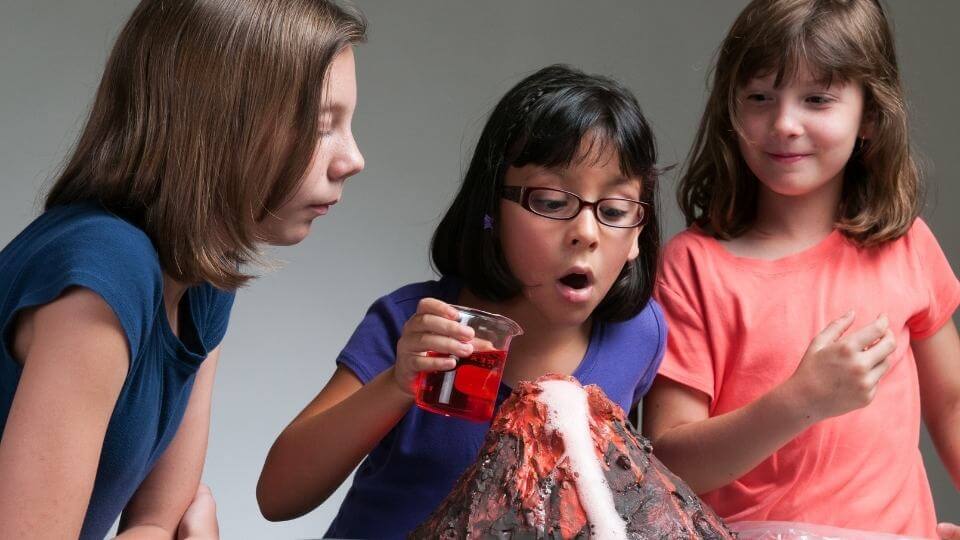Incorporating the Scientific Method Early On

Starting with an observation, and ending with a conclusion, the Scientific Method is a formal series of steps that scientists use to answer questions and solve problems. At the same time, it is a way of thinking that people use informally from a young age.
Whether using it formally or informally, the scientific method always involves an experiment. Fostering experimentation is important from a very young age to help with the learning process. As children mature in their education path, experimentation becomes a more formal process that is integral to their development in the sciences. That is why it is key to create opportunities for your children and students to experiment rather than only offering demonstrations.
Understanding the Difference
When setting up your cultural shelf, designing your science learning plan, or choosing which science activities to offer, it is important to understand the difference between a demonstration and an experiment so that you can provide opportunities to do both. Demonstrations allow children to work hands-on with different scientific concepts by using directions that lead to a known outcome. In an experiment, children have to use the steps of the scientific method to test the unknown.
Oftentimes, changing the variables used in a demonstration can help turn it into an experiment. For example: mixing baking soda and vinegar is a demonstration of a chemical reaction. Testing different ratios of baking soda to vinegar to see which one produces the biggest reaction is an experiment.
Why Does the Scientific Method Matter?
Both demonstrations and experiments help to improve executive functioning skills like direction following, observation, and focusing. Experiments have the added benefit of requiring project planning, critical thinking, and problem-solving skills as well.
When you learn about the Scientific Method, you will connect the problem-solving process you use every day to the more formal steps that scientists use to prevent mistakes and bias when they experiment.
This might sound advanced (or even dull to some), but it doesn’t have to mean memorizing the steps without context as we see in some traditional settings. Learning about the scientific method can start with simply using the vocabulary to describe things we are already doing – just like recognizing the parts of speech in a sentence with the grammar box.
By learning to incorporate the steps of the scientific method early on, your children and students will set themselves up for a future of successful experimenting and project planning!